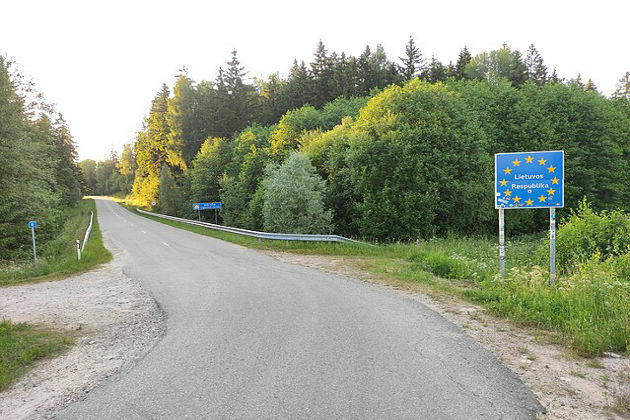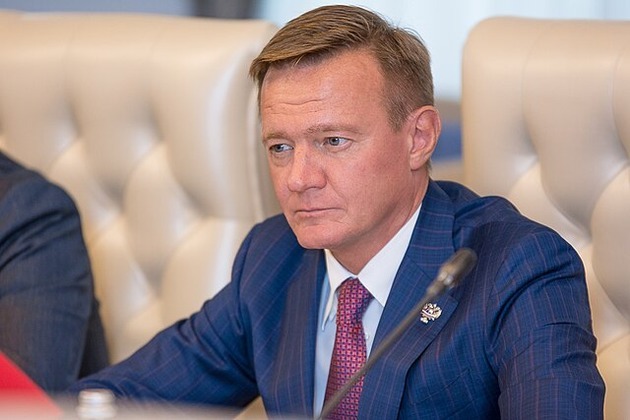What does the typical Russian home look like
RBTH
14 Sep 2018, 08:11 GMT+10

Housing in Russia differs from what you find in Europe or the U.S. The forms of ownership, communal and private spaces, balconies as a luxury, and noisy neighbors behind thin walls - these are just some of the peculiarities of Russian residential living.
If you think an apartment that's 300 square feet in size is not fit even for a college student, then you'd be amazed to learn that many Russian families often raise children in such tiny properties. Let's take a look at how Russians make their home in these small spaces.
The first distinct feature of Russian housing is ownership - as of 2016, over 87 percent of families own their place of residence (a result of privatization in the 1990s and 2000s). But much of these Russian houses and flats were built before 1970. The average Russian family, comprised of three to four people, lives in a two-room apartment that is approximately 50 square meters in size.
In fact, 64 percent of Russian families live in apartments smaller than 60 square meters. How do they do it? Let's take a short tour of a typical Russian apartment.
Entrance
Tatiana Manaeva
Most Russians live in apartment buildings. The stairwell is considered public space, and is cleaned by communal services. Thus, most Russians don't bother keeping it tidy. Not surprisingly, you can't keep your belongings in the stairwell, which is a violation of fire safety rules. Nevertheless, because of the small size of apartments, items such as bicycles and strollers are sometimes kept there.
Hall
Tatiana Manaeva
In buildings dating to the 1980s and after, many entrances have small corridors with an additional iron railing door. This is because during the 1990s crime rates skyrocketed, and people used the railing to lock their bikes, strollers, sometimes pieces of furniture, stacks of winter clothes and what not.
The original Soviet-era apartment doors were thin and useless, so many people struggled to find money to install a thicker door, which is why many apartments now have double doors. Halls are usually very small, enough for a wardrobe, a mirror, a shoe stand and space to take off one's coat. Guests must take off their shoes and put on slippers. "The floor is clean, but nevertheless," - a usual slippers invitation goes.
The hall also has an entressol (a French word familiar to all Russians). These under-the-ceiling shelves, with doors like cupboards, usually offer huge storage spaces that are not so obvious at first glance. Why are they so important and can be found in nearly every apartment? Because Russians LOVE storing things.
Kitchen
Tatiana Manaeva
The smallest kitchens in Russia start at 4.5 square meters in size. Surprisingly, one can fit in a fridge, a gas (or electric) stove, a table for three, several cupboards and a sink. As in most countries, the kitchen is a place for cooking and eating, but in Russia it's also a place for late-night discussions over a bottle of anything, or endless cups of tea.
If you're not close with the host (for example, you're a social worker, a doctor, or salesman), you'll be invited to the living room, but if you're a family friend, then walk straight into the kitchen where you'll be offered whatever is in the fridge; (get ready for a lavish meal, a Russian fridge is never empty).
Also, don't be surprised that a father will kick his wife and kids out of the kitchen if his buddies drop in for a drink. Likewise, the father will be sent away when the wife's girlfriends gather to cook or have a chat.
Rooms
Tatiana Manaeva
In Russia, "dining room" is a concept known only to wealthy people. Today, much like in the Imperial era, only wealthy people can afford a separate room to accommodate guests for dinner or a party. What is called a "dining room," or a "guest room," is usually just the largest room in the apartment.
In most cases, the big sofa is a convertible, and at night the 'dining' room turns into the 'master bedroom' for the parents; while the "small room," or "children's room," is where the kids sleep, play and do their homework - and where drunk guests are allowed to crash, on a blanket on the floor.
When children grow up and leave the nest, this spare room might become the 'dining' room; something which usually marks the beginning of retirement.
Another important part of residential life is the balcony, which often doubles as a storage space, a small parlor, a place to hang and dry clothes, a place to smoke if your family is against smoking inside. In short, a balcony is a highly sought-after feature in Russian apartments.
If you thought a separate room forms a private space, then think again. In most Russian apartment buildings, walls are thin (to save space and resources), so you and your neighbors can hear each other very well, which greatly affected the private lives and sex life of Soviet people.
Bathroom/toilet
Tatiana Manaeva
Bathrooms and toilets are often in the same room, but many people prefer them to be separate because in the morning when children are getting ready for school, and parents are getting ready for work, it's better to have the toilet and bath in separate spaces. Not all apartments, however, enjoy this "privilege."
On the other hand, combining the toilet and bath saves much space, as well as energy - both spaces are lit with one bulb (notice the small window from the bathroom to the toilet?) Bathrooms, even those that are combined, are usually very small - about 4 square meters. And there's almost no chance to install a jacuzzi.
If using any of Russia Beyond's content, partly or in full, always provide an active hyperlink to the original material.
lifestyle Soviet Union living russian kitchen apartments house life soviet More exciting stories and videos on Russia Beyond's Facebook page Read more In it together: How communal apartments shaped the outlook of generationsThe wonders of the Russian izba Luxury meets poverty: communal apartments in St. PetersburgBehind the mystery of wall carpets5 bizarre rules for Soviet-era communal living7 different types of traditional Russian dwelling
 Share
Share
 Tweet
Tweet
 Share
Share
 Flip
Flip
 Email
Email
Watch latest videos
Subscribe and Follow
Get a daily dose of Paris Guardian news through our daily email, its complimentary and keeps you fully up to date with world and business news as well.
News RELEASES
Publish news of your business, community or sports group, personnel appointments, major event and more by submitting a news release to Paris Guardian.
More InformationInternational
SectionTravelers can now keep shoes on at TSA checkpoints
WASHINGTON, D.C.: Travelers at U.S. airports will no longer need to remove their shoes during security screenings, Department of Homeland...
Rubio impersonator used AI to reach officials via Signal: cable
WASHINGTON, D.C.: An elaborate impersonation scheme involving artificial intelligence targeted senior U.S. and foreign officials in...
Warsaw responds to migration pressure with new border controls
SLUBICE, Poland: Poland reinstated border controls with Germany and Lithuania on July 7, following Germany's earlier reintroduction...
Deadly July 4 flash floods renew alarm over NWS staffing shortages
WASHINGTON, D.C.: After months of warnings from former federal officials and weather experts, the deadly flash floods that struck the...
Putin fires transport chief, later found dead in suspected suicide
MOSCOW, Russia: Just hours after his sudden dismissal by President Vladimir Putin, Russia's former transport minister, Roman Starovoit,...
Thousands gather in Himalayas as Dalai Lama celebrates 90th birthday
DHARAMSHALA, India: The Dalai Lama turned 90 on July 6, celebrated by thousands of followers in the Himalayan town of Dharamshala,...
Business
SectionGold ETF inflows hit 5-year high as tariffs drive safe-haven bets
LONDON, U.K.: Physically backed gold exchange-traded funds recorded their most significant semi-annual inflow since the first half...
PwC: Copper shortages may disrupt 32 percent of chip output by 2035
AMSTERDAM, Netherlands: Some 32 percent of global semiconductor production could face climate change-related copper supply disruptions...
U.S. stocks recover after Trump-tariffs-induced slump
NEW YORK, New York - U.S. stocks rebounded Tuesday with all the major indices gaining ground. Markets in the UK, Europe and Canada...
Stocks slide as Trump unveils 25% tariffs on Japan, S. Korea
NEW YORK CITY, New York: Financial markets kicked off the week on a cautious note as President Donald Trump rolled out a fresh round...
BRICS issues rebuke on trade and Iran, avoids direct US criticism
RIO DE JANEIRO, Brazil: At a two-day summit over the weekend, the BRICS bloc of emerging economies issued a joint declaration condemning...
BP appoints ex-Shell finance chief Simon Henry to board
LONDON, U.K.: This week, BP appointed Simon Henry, former Shell finance chief, to its board as a non-executive director effective September...













